Astrology, a subject that has captivated human beings for centuries, offers a wealth of knowledge and insights into our lives. One of the most fascinating tools in astrology is the natal chart. This intricate map of the heavens at the moment of our birth holds profound significance, revealing the positioning and alignment of the planets and stars at that specific time. By understanding the various elements within a natal chart, such as the zodiac signs, planets, and houses, we can gain valuable insights into our personality, strengths, weaknesses, love life, and career trajectory. In this article, we will delve into the significance of natal charts in astrology, exploring how they are constructed, interpreted, and utilized for personal growth and guidance. So, let’s embark on a cosmic journey as we uncover the hidden treasures of the natal chart.
Contents
- What is a Natal Chart?
- How are Natal Charts Constructed?
- The Elements of a Natal Chart
- Interpreting a Natal Chart
- Life Insights from Natal Charts
- Using Natal Charts for Timing
- Common Misconceptions about Natal Charts
- Benefits of Understanding Natal Charts
- Seeking the Guidance of an Astrologer
- Conclusion
-
Frequently Asked Questions
- What can a natal chart reveal about a person?
- Can natal charts predict the future?
- Is it necessary to know the exact time of birth for a natal chart?
- Can two people with the same natal chart have different lives?
- Are natal charts only based on the Sun sign?
- Can natal charts help in understanding relationships?
- Do natal charts determine a person’s career?
- Can natal charts be helpful in self-discovery?
- Is astrology considered a science?
- Is it necessary to consult an astrologer for natal chart interpretation?
- References
-
Frequently Asked Questions
- What is the purpose of a Natal Chart?
- How accurate are Natal Charts?
- Can I create my own Natal Chart?
- What do the Zodiac Signs represent in a Natal Chart?
- How do the Planets in a Natal Chart affect us?
- What is the significance of the Ascendant Sign in a Natal Chart?
- What are Aspects in a Natal Chart?
- How can I apply the insights from my Natal Chart to my love life?
- Can a Natal Chart predict future events?
- Should I consult an astrologer to interpret my Natal Chart?
- References
- Read More
What is a Natal Chart?
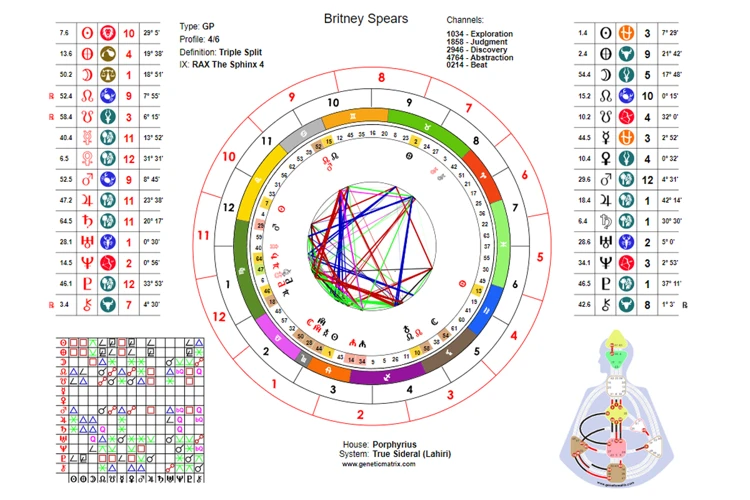
A natal chart, also known as a birth chart, is a unique snapshot of the planetary positions at the precise moment of an individual’s birth. It is a celestial map that serves as the foundation for astrological interpretations and analyses. The natal chart is an intricate representation of the positions of the Sun, Moon, planets, and other celestial bodies in relation to the Earth. These positions are plotted on a circular diagram, divided into twelve sections known as houses, with each house representing a different area of life, such as relationships, career, and personal identity. The natal chart is based on the individual’s specific date, time, and place of birth. The exact birth time is crucial, as even a difference of a few minutes can alter the positions of the planets, thereby impacting the interpretation of the chart. Analyzing planetary placements within the natal chart provides valuable insights into an individual’s personality, strengths, and challenges. It serves as a cosmic blueprint, offering a deeper understanding of our potentials and life’s purpose. Many believe that the natal chart is a powerful tool for self-discovery and personal growth, providing guidance and illuminating the path to our true selves.
How are Natal Charts Constructed?
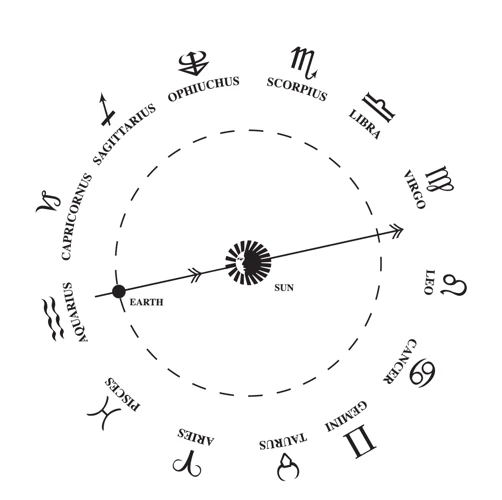
Natal charts are constructed by gathering precise information about an individual’s birth date, time, and location. These three key pieces of information are essential in determining the exact positions of the planets and other celestial bodies at the moment of birth. The date of birth provides the basis for identifying the zodiac sign in which the Sun was positioned during the birth. The birth time is crucial as it determines the Ascendant sign, which is the zodiac sign that was rising on the eastern horizon at the exact moment of birth. The Ascendant sign sets the framework for the entire natal chart, influencing the individual’s outward personality and appearance. With the date, time, and location of birth in hand, astrologers use specialized software or manual calculations to plot the positions of the planets and other celestial bodies in the twelve houses of the chart. These calculations take into account the exact coordinates of the birthplace to accurately depict the celestial map of the individual’s natal chart. Once constructed, the natal chart becomes a powerful tool for astrologers to analyze and interpret various aspects of an individual’s life. It is through the meticulous construction of the natal chart that astrologers can unlock the cosmic secrets and divine insights that lie within.
The Elements of a Natal Chart
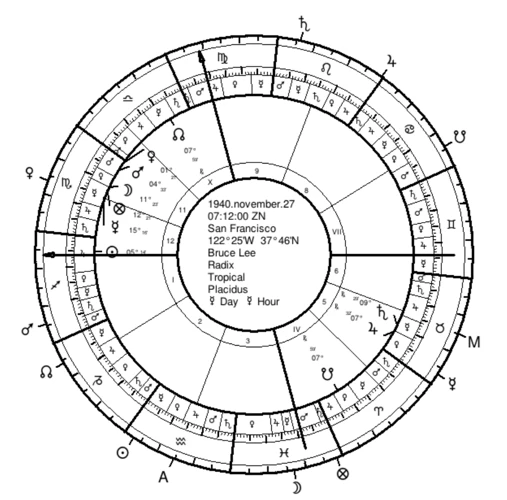
The natal chart is composed of several key elements that work together to provide a comprehensive understanding of an individual’s cosmic makeup. These elements include the zodiac signs, planets, and houses. The zodiac signs, also known as the twelve astrological signs, represent different archetypes and personality traits. Each sign has its own unique characteristics and influences the areas of life associated with the houses it rules. The planets in the natal chart symbolize different aspects of our psyche and represent various energies and influences. Each planet carries its own significance and represents different aspects of our being, like Mercury for communication and intellectual pursuits, and Venus for love and beauty. Lastly, the houses in the natal chart represent different areas of life, such as relationships, career, education, and spirituality. These houses depict the specific areas where the planetary energies manifest in a person’s life. By analyzing the interplay between these three elements, astrologers can gain profound insights into an individual’s personality, strengths, weaknesses, and life experiences. Understanding the elements of a natal chart is a crucial step in unlocking the mysteries of the self and one’s life path.
The Zodiac Signs
The zodiac signs play a significant role in a natal chart, reflecting the characteristics and qualities of an individual’s personality and behavior. There are twelve zodiac signs, each associated with a specific element and ruling planet. The signs are Aries, Taurus, Gemini, Cancer, Leo, Virgo, Libra, Scorpio, Sagittarius, Capricorn, Aquarius, and Pisces. Aries, for example, is a fire sign ruled by Mars, known for its boldness, assertiveness, and drive. Taurus, an earth sign ruled by Venus, is known for its stability, practicality, and determination. Each sign has its unique energy and attributes, shaping our approach to life and influencing our interactions with others. Astrologers examine the position of the Sun, Moon, and other planets within the zodiac signs to gain insight into an individual’s core essence and character. By examining the interactions between different zodiac signs within a natal chart, astrologers can draw connections between various aspects of an individual’s personality and provide a comprehensive analysis of their strengths, challenges, and potential compatibility. This understanding of the zodiac signs can be a valuable tool in self-awareness, helping individuals embrace their inherent qualities and navigate various aspects of life, including career choices and relationships.
The Planets
The planets in a natal chart play a pivotal role in shaping an individual’s personality and life experiences. Each planet represents a different aspect of our being and influences specific areas of our lives. Here are the key planets and their significance in astrology:
1. The Sun: Often referred to as the “ruling planet,” the Sun represents our core essence and identity. It governs our ego, vitality, and overall sense of self. The placement of the Sun in a natal chart reveals our basic character traits, strengths, and the central themes that drive us in life.
2. The Moon: The Moon symbolizes our emotions, instincts, and intuition. It represents our inner world and how we respond emotionally to different situations. The Moon’s placement in the chart provides insights into our emotional needs, nurturing qualities, and our subconscious patterns.
3. Mercury: Mercury rules communication, intellectual abilities, and thought processes. It influences how we express ourselves, process information, and make decisions. The placement of Mercury in the natal chart indicates our communication style, learning preferences, and intellectual agility.
4. Venus: Venus is associated with love, relationships, beauty, and harmony. It governs our romantic desires, social interactions, and aesthetic preferences. The placement of Venus in the chart reveals our approach to love, our values around relationships, and the kind of qualities we seek in a partner.
5. Mars: Mars represents our drive, energy, and ambitions. It governs our passions, assertiveness, and how we assert ourselves. The placement of Mars in the natal chart indicates our level of motivation, how we take action, and our assertive tendencies.
6. Jupiter: Jupiter is associated with expansion, growth, and abundance. It governs our beliefs, philosophies, and opportunities for personal growth. The placement of Jupiter in the chart indicates our areas of potential luck, abundance, and the lessons we need to learn for personal and spiritual development.
7. Saturn: Saturn is often referred to as the “taskmaster” of the zodiac. It represents structure, discipline, and responsibility. Saturn governs our ambitions, limitations, and areas where we need to work hard to achieve success. The placement of Saturn reveals our fears, lessons, and areas where we need to overcome limitations to reach our goals.
8. Uranus, Neptune, and Pluto: These outer planets have longer orbits and therefore influence generational themes. Uranus is associated with innovation, revolution, and uniqueness. Neptune represents spirituality, dreams, and intuition. Pluto symbolizes transformation, power, and rebirth. Their placement in the natal chart reveals the collective influence on a particular generation.
Each planet’s placement and aspects within the natal chart offer a unique lens through which to understand an individual’s personality, motivations, and life experiences. Native American creation stories often incorporate planetary symbolism, recognizing the profound impact of celestial bodies on human existence. The detailed analysis of planetary positions helps astrologers provide personalized insights for individuals seeking self-awareness and guidance in various areas of life.
The Houses
The houses in a natal chart are twelve divisions that represent different areas of life and experience. Each house has its own unique significance and influences the interpretation of the natal chart. Let’s explore the meaning and significance of each house:
1. The First House (Ascendant): This house represents the individual’s self-image, physical appearance, and overall persona. It reveals how others perceive us and our approach to life.
2. The Second House: This house is associated with finances, possessions, and values. It reflects how we acquire and manage resources, as well as our attitude towards material wealth.
3. The Third House: This house governs communication, learning, and siblings. It indicates our intellectual abilities, interests, and the way we express ourselves verbally.
4. The Fourth House (IC): This house represents home, family, and roots. It reveals our emotional landscape, our relationship with our parents, and the foundation on which we build our lives.
5. The Fifth House: This house is associated with creativity, self-expression, and romance. It reflects our hobbies, passions, and the way we seek pleasure and joy.
6. The Sixth House: This house governs work, health, and daily routines. It indicates our approach to tasks, our work ethic, and our physical well-being.
7. The Seventh House (Descendant): This house represents partnerships and relationships. It reflects our attitude towards commitment, marriage, and how we interact with others.
8. The Eighth House: This house is associated with transformation, sexuality, and shared resources. It indicates our ability to undergo personal change, our attitude towards intimate relationships, and matters of inheritance or shared finances.
9. The Ninth House: This house governs higher education, travel, and spirituality. It reflects our philosophical beliefs, our thirst for knowledge, and our connection to the broader world.
10. The Tenth House (Midheaven): This house represents career, status, and public image. It reflects our professional aspirations, achievements, and the way we are perceived by society.
11. The Eleventh House: This house is associated with friendships, social networks, and goals. It reflects our involvement in groups and organizations, as well as our aspirations and dreams.
12. The Twelfth House: This house governs solitude, spirituality, and the unconscious mind. It indicates our hidden strengths and weaknesses, as well as our connection to the divine or the mystical.
Understanding the significance of each house in a natal chart helps astrologers provide a more comprehensive analysis of an individual’s life experiences and areas of focus. The interplay between the planets and the houses further deepens the understanding of an individual’s personality and the influences that shape their life journey.
Interpreting a Natal Chart
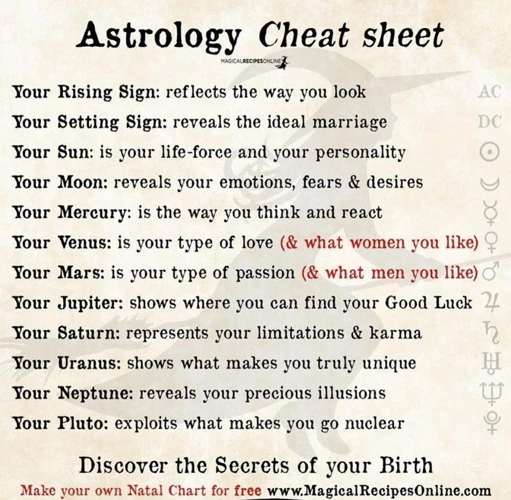
Interpreting a natal chart requires a deep understanding of the various elements within it. One key component to consider is the ascendant sign, also known as the rising sign, which represents the individual’s outward personality and how they present themselves to the world. The planetary placements play a crucial role as well, as each planet symbolizes different aspects of the self, such as emotions (Moon), communication (Mercury), and ambition (Mars). The aspects between these planets reveal how they interact with one another and influence the individual’s behavior and experiences. Additionally, the houses in the natal chart indicate specific areas of life where these planetary energies manifest. For example, the seventh house is associated with partnerships and relationships, while the tenth house represents career and public image. By analyzing these elements together, astrologers can uncover a wealth of information about an individual’s personality, strengths, challenges, and life experiences.
The Ascendant Sign
The Ascendant sign, also known as the Rising sign, is an essential component of the natal chart in astrology. It represents the zodiac sign that was rising on the eastern horizon at the exact moment of an individual’s birth. The Ascendant sign is significant as it sets the tone for the entire natal chart and influences how others perceive us. It represents our outward personality, our physical appearance, and the first impression we make on others. The Ascendant sign reflects our approach to life, our demeanor, and our behavior in social situations. It represents the mask we wear to navigate the world and interact with others. The sign of the Ascendant reveals how we present ourselves to the world and the qualities we embody in our external expression. For example, someone with an Ascendant sign in Aries may come across as bold, assertive, and confident, while someone with a Capricorn Ascendant may appear more reserved, disciplined, and ambitious. The Ascendant sign is a crucial factor in understanding an individual’s overall astrological makeup, and it provides valuable insights into our external image and the way we are perceived by others.
Planetary Placements
Planetary placements play a crucial role in the interpretation of a natal chart. Each planet has its own unique energy and symbolism, influencing different aspects of our lives. The position of each planet within the natal chart provides valuable insights into our personality traits, emotions, and behaviors. Let’s explore some of the key planetary placements and their significance:
1. The Sun: The placement of the Sun represents our core identity, ego, and life purpose. It reveals our potential for self-expression, creativity, and leadership. The zodiac sign and house in which the Sun is located indicate the specific qualities and areas of life that are most important to us.
2. The Moon: The Moon represents our emotions, instincts, and subconscious mind. It reflects our emotional needs, nurturing qualities, and how we relate to others on an emotional level. The placement of the Moon in a natal chart sheds light on our emotional nature and our instinctual reactions to different situations.
3. Mercury: Mercury symbolizes communication, thinking patterns, and learning style. Its placement in the natal chart signifies how we express ourselves verbally and intellectually. It reveals our mental agility, analytical skills, and areas of interest.
4. Venus: Venus represents love, relationships, and attraction. Its placement in the natal chart indicates our romantic and social tendencies. It reveals our values, preferences in love, and how we express affection and seek harmony in relationships.
5. Mars: Mars embodies energy, passion, and action. Its placement in the natal chart indicates how we assert ourselves, our drive for success, and our ability to take decisive action. Mars also reveals our competitive nature and how we handle conflict.
6. Jupiter: Jupiter symbolizes expansion, abundance, and growth. Its placement in the natal chart reveals our beliefs, values, and areas of life where we seek new experiences and opportunities. Jupiter signifies our optimism, luck, and the potential for personal and spiritual growth.
7. Saturn: Saturn represents responsibility, discipline, and structure. Its placement in the natal chart indicates our approach to work, commitment, and long-term goals. Saturn also reveals our fears, limitations, and the areas of life where we may face challenges and need to learn important life lessons.
These are just a few examples of planetary placements and their significance in a natal chart. By analyzing the positions of the planets, astrologers can provide detailed insights into an individual’s personality, strengths, and challenges. It is important to note that the interpretation of planetary placements should be done holistically, taking into consideration the interactions and aspects between different planets in the chart. This comprehensive analysis allows for a more nuanced understanding of an individual’s character and life experiences.
Aspects
Aspects in a natal chart refer to the geometric angles formed between the planets and other celestial bodies. They provide valuable information about the dynamic relationships and interactions between these planetary energies. There are several different aspects that astrologers examine when interpreting a natal chart.
1. Conjunction: A conjunction occurs when two planets are in close proximity to each other, creating a powerful fusion of their energies. This aspect can signify a blending or intensification of the qualities associated with the involved planets.
2. Opposition: An opposition forms when two planets are approximately 180 degrees apart. This aspect represents a polarity or tension between the energies of the involved planets, often manifesting as a need for balance and integration.
3. Trine: A trine occurs when two planets are approximately 120 degrees apart. This aspect is considered harmonious, symbolizing ease, flow, and favorable interactions between the planetary energies.
4. Square: A square forms when two planets are approximately 90 degrees apart. This aspect represents a dynamic and challenging relationship between the involved planets, often reflecting obstacles, conflicts, and the need for growth and transformation.
5. Sextile: A sextile occurs when two planets are approximately 60 degrees apart. This aspect is considered positive and supportive, indicating opportunities, creativity, and potential for growth in the areas represented by the involved planets.
6. Quincunx: A quincunx forms when two planets are approximately 150 degrees apart. This aspect represents an adjustment or tension between the energies of the involved planets, often requiring adaptability and flexibility.
By analyzing these aspects within the natal chart, astrologers can gain deeper insights into an individual’s personality, motivations, and life experiences. The aspects reveal the intricate web of connections and influences between the planets, shedding light on the complexities and dynamics of one’s astrological makeup. They provide a nuanced understanding of the strengths, challenges, and potentials present in an individual’s life journey.
Life Insights from Natal Charts
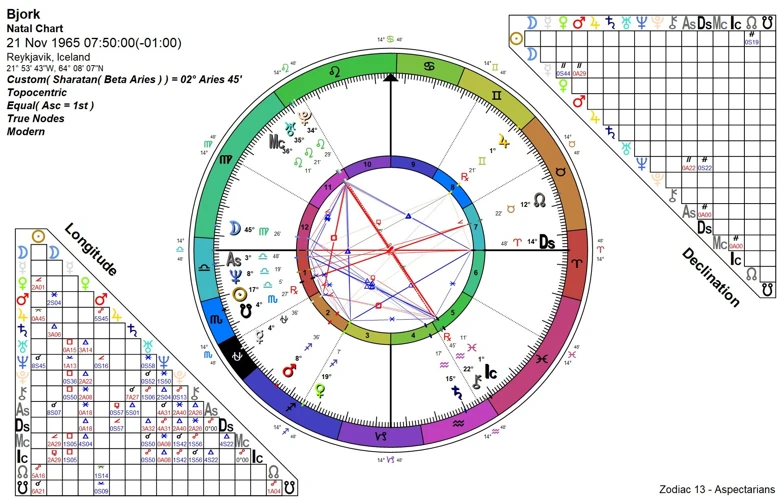
Life Insights from Natal Charts:
Natal charts offer profound insights into various aspects of our lives, helping us gain a deeper understanding of ourselves and the world around us. By examining the different elements within a natal chart, such as the personality traits, strengths and weaknesses, love and relationships, and career and success, we can unlock valuable information that can shape our life path. The natal chart provides a detailed analysis of our personality traits, revealing our innate qualities, characteristics, and behavior patterns. It helps us understand our strengths and weaknesses, enabling us to maximize our potential and work on aspects that may require development. Additionally, the natal chart sheds light on our love and relationships, offering insights into our compatibility with others and the potential challenges we may encounter. It can guide us in finding fulfilling partnerships and nurturing connections. The natal chart provides valuable information about our career path and success. By examining the planetary placements and aspects within the chart, we can uncover our vocational strengths and inclinations, helping us make informed decisions about our professional endeavors. The natal chart serves as a guidebook, empowering us to make conscious choices and navigate through life with greater clarity and self-awareness.
Personality Traits
Personality traits are a key focus when interpreting a natal chart. The positioning of the planets and their relationships to each other in the different houses of the chart can provide valuable insights into an individual’s character and behavior. The Sun sign, representing one’s core identity and ego, plays a significant role in determining personality traits. It provides a glimpse into a person’s basic characteristics, such as their extroversion or introversion, assertiveness, and confidence. Additionally, the Moon sign represents the emotional nature and subconscious mind, shedding light on an individual’s emotional responses and needs. Other planetary placements, such as Mercury for communication style, Venus for love and affection, and Mars for drive and ambition, further contribute to the overall personality makeup. The aspects, or angles formed between planets, also influence how these traits manifest in a person’s life. For example, harmonious aspects can enhance positive traits, while challenging aspects may present areas of growth and development. It is important to remember that no single planet or aspect defines a person entirely. The natal chart provides a comprehensive picture, showcasing the complexity and uniqueness of an individual’s personality. Understanding these personality traits can offer valuable self-awareness and serve as a foundation for personal development and growth.
Strengths and Weaknesses
Strengths and weaknesses are key elements that can be uncovered through the analysis of a natal chart. Each individual has their unique set of qualities and challenges, and the natal chart reveals these characteristics in a distinct manner. Here are some insights into how strengths and weaknesses can be identified through the natal chart:
1. Planetary Placements: The positions of the planets in the natal chart play a significant role in determining an individual’s strengths and weaknesses. For example, a strong placement of Mars can indicate traits like assertiveness, courage, and ambition, while a challenging placement may manifest as impulsiveness or aggression.
2. Aspects: Aspects refer to the geometric angles between the planets in the natal chart. They provide further insights into an individual’s strengths and weaknesses. Favorable aspects, such as trines or sextiles, can highlight talents and innate abilities, while challenging aspects, like squares or oppositions, may indicate areas where struggles or obstacles are more prominent.
3. Elements and Modalities: The elements (fire, earth, air, and water) and modalities (cardinal, fixed, and mutable) in the natal chart also contribute to understanding strengths and weaknesses. Each element and modality has its unique qualities, and a balanced distribution of these factors can indicate a well-rounded set of strengths. For instance, a person with a predominant fire element may have strengths in leadership, enthusiasm, and creativity, but may need to be mindful of potential impulsiveness or aggression.
4. House Placements: The houses in the natal chart represent different areas of life, and their placements can shed light on strengths and weaknesses in specific domains. For example, a person with a strong emphasis on the sixth house may excel in areas related to health, daily routines, and service to others, while someone with challenging aspects in the tenth house may face obstacles in their career or public image.
By examining these various elements within the natal chart, astrologers can provide valuable insights into an individual’s strengths to embrace and weaknesses to work on. The natal chart serves as a roadmap for personal growth and self-awareness, enabling individuals to harness their strengths and overcome their weaknesses in pursuit of a fulfilling and balanced life path.
Love and Relationships
Love and relationships are significant aspects of our lives, and analyzing a natal chart can offer profound insights into these areas. The positioning of specific planets in the natal chart can shed light on an individual’s approach to love, their romantic preferences, and how they express affection. For example, the placement of Venus, the planet of love and relationships, can reveal a person’s romantic nature and the qualities they seek in a partner. If Venus is in a harmonious aspect with other planets, it may indicate a person who easily attracts love and experiences harmonious relationships. On the other hand, challenging aspects to Venus can suggest struggles or lessons to be learned in the realm of love. Additionally, the placement of the Moon in the natal chart can provide insights into an individual’s emotional needs in relationships and how they nurture and connect with others. The compatibility of two individuals can also be explored through their natal charts, particularly by comparing the placement of Venus and Mars, which represent romantic and sexual desires respectively. By examining the natal charts of both partners, an astrologer can provide guidance on the strengths and challenges within the relationship, helping individuals navigate love and enhance compatibility. It’s important to note that while natal charts can offer valuable insights, individual choices and actions also play a significant role in forming and nurturing relationships.
Career and Success
When it comes to career and success, the natal chart can provide valuable insights into an individual’s vocational path and potential achievements. The placement of certain planets, such as Jupiter and Saturn, and their aspects to other planets or houses can offer clues about professional strengths, areas of expertise, and opportunities for growth. For example, a strong placement of Jupiter in the natal chart may indicate good fortune and expansion in career endeavors. Saturn’s placement, on the other hand, can highlight areas where hard work, discipline, and perseverance are required. The positioning of the Midheaven, also known as the “career point,” can offer information about an individual’s public image, reputation, and ambitions. Additionally, the houses in the natal chart can shed light on different career domains. For instance, the tenth house often represents one’s profession, while the sixth house relates to work environment and daily routines. By analyzing the natal chart, individuals can gain a deeper understanding of their natural talents, preferred work environment, and potential avenues for success. It is important to note that the natal chart provides a framework for exploration and self-reflection, and personal choice and determination are still significant factors in shaping one’s career path. Understanding the astrological influences can be a helpful tool, but it is not a guarantee of success or limitation.
Using Natal Charts for Timing
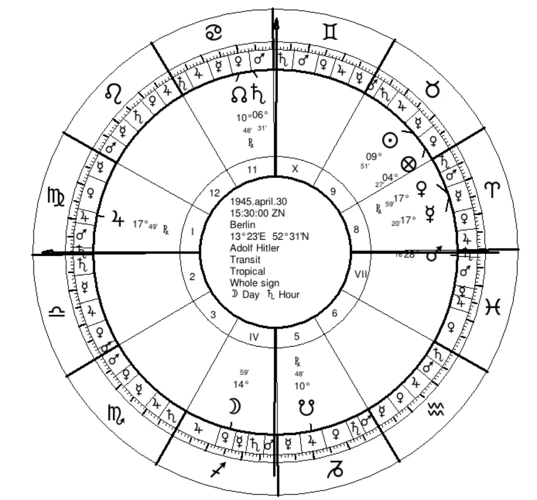
Using natal charts for timing is one of the fascinating aspects of astrology. Astrologers employ various techniques to determine the timing of events and important cycles in a person’s life. Three common methods include transits, progressions, and return charts. Transits involve analyzing the current positions of the planets in relation to the natal chart and assessing how they may be influencing or triggering specific areas of life. Progressions, on the other hand, consider the symbolic movement of the natal chart over time, reflecting inner growth and evolving life experiences. Return charts, such as the solar return chart, are constructed for the exact moment when a planet returns to its natal position, usually on a person’s birthday. These charts offer insights into the themes and energies that may shape the upcoming year. By understanding and utilizing these techniques, individuals can gain valuable guidance regarding the timing of significant events, career shifts, personal milestones, or relationship dynamics. Analyzing astrological transits and incorporating timing techniques can help individuals make informed decisions, prepare for potential challenges, and seize opportunities in various aspects of life.
Transits
Transits in astrology refer to the movement of planets as they make current and ongoing connections with the planets in an individual’s natal chart. These transiting planets represent the current cosmic energy and its impact on our lives. When a planet in the sky forms an aspect with a planet in the natal chart, it activates and influences that particular area of life. For example, if the transiting Mars forms a conjunction with an individual’s natal Sun, it can bring about a surge of energy, assertiveness, and drive. Conversely, if Saturn is making a challenging aspect to an individual’s natal Venus, it may signify a period of relationship challenges and lessons in creating boundaries. Transits can offer valuable insights into current opportunities, challenges, and themes that an individual may face at a particular time. Astrologers use transit charts, which superimpose the current planetary positions onto the natal chart, to analyze and interpret these cosmic influences. By understanding the upcoming transits, individuals can prepare themselves, make informed decisions, and align their actions with the prevailing cosmic energy. It is important to note that transits are temporary and have a shorter time span compared to the long-term effects indicated in the natal chart. Regularly monitoring transits can provide guidance and help individuals navigate the ebb and flow of life’s circumstances with greater awareness.
Progressions
Progressions in astrology refer to a technique used to track the movement of the planets in relation to an individual’s natal chart. While the natal chart provides insights into our inherent characteristics and potentials at the time of our birth, progressions offer a dynamic perspective by showing how our lives unfold and evolve over time. Progressions are based on the concept that each day after our birth corresponds to one year of our life. In other words, the planetary positions in the progressed chart are calculated by advancing the natal positions at a certain rate, generally one day equals one year. This method allows astrologers to examine the developmental patterns and themes that unfold during different stages of our lives. Progressions can provide valuable insights into personal growth, relationships, career changes, and various life events. By analyzing the progressed chart in conjunction with the natal chart, astrologers can identify significant periods of transformation, opportunities, and challenges that may arise. It is important to note that progressions do not replace the natal chart but rather complement it, offering a nuanced understanding of an individual’s life journey.
Return Charts
Return charts, also known as solar return charts, are an invaluable tool in astrology for gaining insights into the upcoming year of an individual’s life. A return chart is calculated for the precise moment when the Sun aligns with its natal position, creating a unique chart that represents the energies and themes for the upcoming year. This usually occurs on or near a person’s birthday, hence the name “solar return.” The return chart provides information on the overall energy of the upcoming year, highlighting significant areas of focus and potential events. It can offer clues about the individual’s career, relationships, health, and personal growth during that specific period. Return charts are constructed by taking into account the specific location where the individual will celebrate their birthday and using that location’s coordinates to adjust the chart. This allows for a more accurate reflection of the energies of the year in that particular location. By analyzing the placements of the planets, the aspects they form, and the house placements in the return chart, astrologers can provide insights and predictions on how the year may unfold. It is important to note that return charts are not meant to predict exact events but rather to provide a general overview and guidance for the upcoming year. They serve as a tool for self-reflection and planning, helping individuals make informed decisions and navigate the energies and opportunities that lie ahead.
Common Misconceptions about Natal Charts
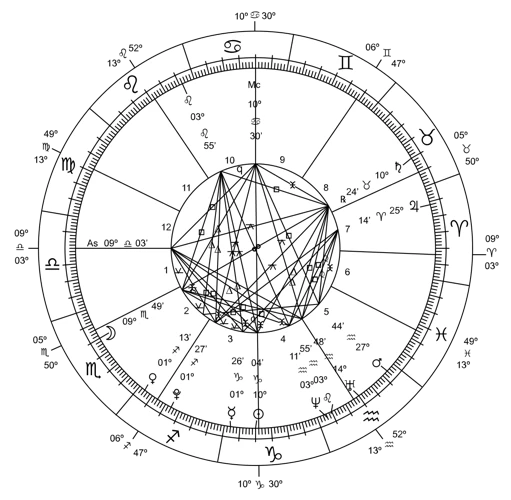
Despite the widespread fascination with natal charts, there are several common misconceptions surrounding their interpretation and significance. One prevalent misconception is that natal charts determine an individual’s destiny or fate. In reality, natal charts provide insight into potential opportunities, challenges, and personality traits, but they do not dictate predetermined outcomes. Another misconception is that natal charts are solely determined by the sun sign, also known as the zodiac sign. While the sun sign is indeed a crucial component of the natal chart, it is just one piece of the puzzle. The natal chart takes into account the positions of multiple planets, houses, and aspects, creating a complex and nuanced representation of an individual’s cosmic makeup. Additionally, some people mistakenly believe that natal charts are only relevant for those who closely follow astrology or have a spiritual inclination. In truth, natal charts can offer valuable insights to anyone, regardless of their beliefs or interests. They provide a deeper understanding of oneself, offering guidance on personal growth, relationships, and career choices. It is essential to approach natal charts with an open mind and recognize that they are a tool for self-reflection rather than an absolute determinant of one’s life path.
Benefits of Understanding Natal Charts
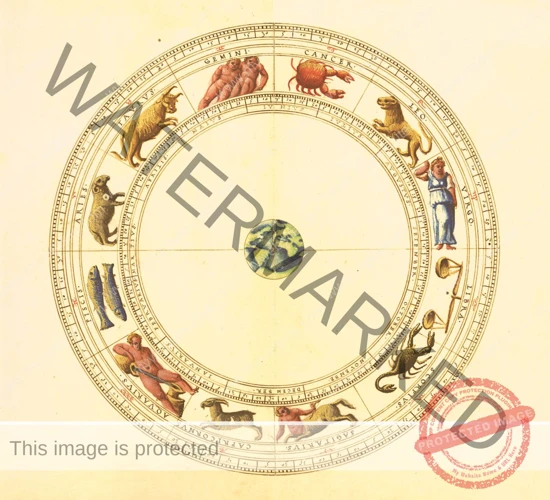
Understanding natal charts can provide numerous benefits and insights for individuals who delve into the realm of astrology. By gaining a deeper understanding of their natal chart, individuals can unlock a wealth of self-knowledge and self-awareness. One of the key benefits is the ability to gain a clearer understanding of one’s personality traits, strengths, and weaknesses. The natal chart can reveal distinct character traits and patterns that shape an individual’s behaviors and choices. Recognizing these traits can empower individuals to embrace their strengths and work on their weaknesses, fostering personal growth and self-improvement. Understanding one’s natal chart can provide valuable insights into love and relationships. It can shed light on compatibility with potential partners, highlighting areas of harmony and potential challenges. Armed with this information, individuals can navigate relationships with a deeper understanding and make informed choices in their personal lives. Additionally, natal charts can offer guidance in career and success. By analyzing the planetary positions and aspects within one’s chart, individuals can gain insight into their natural talents and areas of professional fulfillment. This knowledge can help individuals make informed career choices and pursue paths aligned with their true passions and potential. Understanding natal charts can bring clarity, direction, and empowerment to individuals’ lives, helping them make conscious choices and embrace their true selves.
Seeking the Guidance of an Astrologer

Seeking the guidance of an astrologer can be an invaluable resource for those who wish to gain a deeper understanding of their natal charts and the insights they provide. An experienced astrologer is well-versed in the intricate language of astrology and can interpret the complex symbolism within a natal chart. They possess the knowledge and expertise to analyze the planetary placements, aspects, and houses to provide personalized and accurate interpretations. By consulting with an astrologer, individuals can gain a deeper understanding of themselves, their life path, and the dynamics at play in their relationships, career, and personal growth. Astrologers can help individuals navigate challenging periods and make informed choices based on the astrological influences at play. Astrologers can provide guidance on timing and pivotal moments in one’s life through techniques such as transits, progressions, and return charts. These techniques allow for a more nuanced understanding of the current and future astrological influences, aiding individuals in making informed decisions and seizing opportunities in different areas of life. Ultimately, seeking the guidance of an astrologer can provide individuals with a greater sense of self-awareness, clarity, and empowerment as they navigate their life’s journey. Whether it’s decoding the intricacies of a natal chart or seeking guidance during significant life events, an astrologer can offer valuable perspectives and insights to help individuals make sense of the cosmic energies at play in their lives.
Conclusion

In conclusion, the natal chart serves as a window into the intricate workings of astrology. It is a personalized cosmic guide that offers profound insights into our lives and our place within the universe. By understanding the elements of the natal chart, such as the zodiac signs, planets, and houses, we can unravel the unique blueprint of our individuality. The natal chart not only reveals our personality traits and strengths but also provides valuable guidance in various areas of life, including love, relationships, careers, and timing. It is important to debunk the misconceptions surrounding natal charts and embrace the benefits of understanding this powerful tool. Whether you choose to interpret your own chart or seek the guidance of an astrologer, the natal chart can help us navigate the complex journey of life with a greater sense of purpose and self-awareness. So, let the celestial dance of the planets illuminate your path and unlock the hidden treasures within your natal chart.
Frequently Asked Questions

What can a natal chart reveal about a person?
A natal chart can reveal various aspects of a person’s life, including their personality traits, strengths, weaknesses, love life, and career potential. It provides insights into their inner world, motivations, and life purpose.
Can natal charts predict the future?
Natal charts do not provide definite predictions of the future. However, they can offer guidance and insights into potential life events, opportunities, and challenges based on planetary transits and progressions.
Is it necessary to know the exact time of birth for a natal chart?
Knowing the exact time of birth is crucial for an accurate natal chart. The positions of the planets at the time of birth can vary significantly within a short period, so an accurate birth time ensures the chart’s precision.
Can two people with the same natal chart have different lives?
Although two people may have the same natal chart, their lives can differ due to environmental factors, personal choices, and free will. While the chart outlines potentials and tendencies, individuals have the power to shape their lives.
Are natal charts only based on the Sun sign?
No, natal charts take into account the positions of all planets and celestial bodies at the time of birth. While the Sun sign is significant, the chart is a comprehensive representation of the individual’s cosmic influences.
Can natal charts help in understanding relationships?
Yes, natal charts can provide insights into relationship dynamics. Comparing and analyzing the natal charts of two individuals can reveal compatibility, shared values, and potential challenges in a relationship.
Do natal charts determine a person’s career?
Natal charts offer insights into an individual’s strengths, talents, and potential career paths. However, personal choices, education, and life experiences also play a role in shaping a person’s career.
Can natal charts be helpful in self-discovery?
Absolutely! Natal charts are a powerful tool for self-discovery. They can help individuals gain a deeper understanding of their own motivations, desires, and life purpose, illuminating their path towards personal growth and fulfillment.
Is astrology considered a science?
Astrology has its roots in ancient observations and interpretations of celestial movements. While it is not considered a science in the traditional sense, it is a respected metaphysical discipline that offers profound insights into human nature and the cosmic interconnectedness.
Is it necessary to consult an astrologer for natal chart interpretation?
While it is possible to learn the basics of natal chart interpretation, consulting an experienced astrologer can provide a more nuanced and accurate analysis. They have the expertise to decode the complexities of the chart and offer personalized guidance based on the individual’s unique astrological makeup.
References
- Astrology Birth Chart: Meaning and How to Interpret
- Birth Charts 101: Understanding the Planets and Their …
Frequently Asked Questions

What is the purpose of a Natal Chart?
A Natal Chart is used in astrology to provide insight into a person’s character traits, strengths, weaknesses, and life events.
How accurate are Natal Charts?
The accuracy of a Natal Chart depends on various factors, such as the skill of the astrologer and the accuracy of the birth time and location provided.
Can I create my own Natal Chart?
Yes, there are online tools and software available that allow you to generate your own Natal Chart by entering your birth details.
What do the Zodiac Signs represent in a Natal Chart?
The Zodiac Signs represent different personality traits and characteristics that influence an individual’s behavior and outlook on life.
How do the Planets in a Natal Chart affect us?
The Planets in a Natal Chart symbolize different energies and influences that shape our personality, emotions, and life experiences.
What is the significance of the Ascendant Sign in a Natal Chart?
The Ascendant Sign, also known as the Rising Sign, represents the mask we wear in the outside world and influences our physical appearance and first impressions.
What are Aspects in a Natal Chart?
Aspects refer to the angles formed between planets in a Natal Chart and provide information about the harmony or tension between different areas of life.
How can I apply the insights from my Natal Chart to my love life?
Your Natal Chart can reveal your compatibility with potential partners, shed light on relationship patterns, and help you understand your own needs and desires in love.
Can a Natal Chart predict future events?
While a Natal Chart cannot predict specific events, it can highlight themes and tendencies that may manifest in future experiences.
Should I consult an astrologer to interpret my Natal Chart?
While it is possible to interpret your own Natal Chart, consulting an experienced astrologer can provide deeper insights and guidance tailored to your unique astrological makeup.







